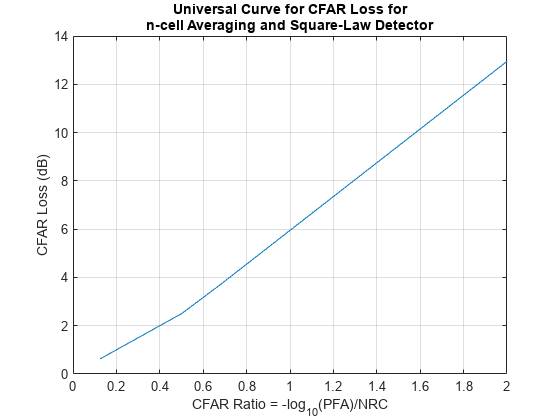cfarloss
Description
LCFAR = cfarloss(PFA,NRC)LCFAR, in dB for the probability of
false alarm, PFA, and number of reference cells, NRC, that you specify. The function
calculates loss for the cell-averaging (CA) CFAR method and a square-law detector based on
the Gregers-Hansen's universal CFAR loss curve.
LCFAR = cfarloss(PFA,NRC,Name,Value)LCFAR =
cfarloss(1e-8,4:4:64,'Method','CA') computes approximate loss using the CA CFAR
process.. You can specify multiple name-value arguments.
Examples
Input Arguments
Name-Value Arguments
Output Arguments
Extended Capabilities
Version History
Introduced in R2021a
